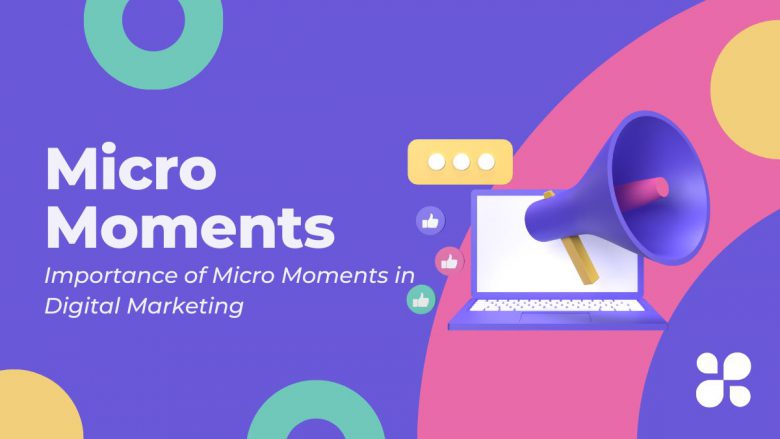
In the world of digital marketing, micro moments have become an important aspect of customer engagement. Micro moments are those brief instances when a person uses their mobile device to search for information, make a decision, or take action. These moments are characterized by a high level of intent and provide an opportunity for businesses to connect with customers in a meaningful way. In this blog post, we will explore the importance of micro moments in digital marketing and how businesses can leverage them to drive engagement and conversions.
1. Understanding Micro Moments:
In the world of digital marketing, understanding micro moments is crucial to creating effective campaigns. Micro moments are those split-second instances where a consumer turns to their mobile device to learn something, do something, discover something, or buy something. These moments are characterized by their brevity and specificity, as consumers have an immediate need or desire that they seek to fulfill.
To leverage micro moments effectively in your marketing strategy, it’s important to understand the different types of micro moments that consumers experience. These include “I-want-to-know” moments where a consumer seeks information about a product or service; “I-want-to-go” moments where they look for business locations and directions; “I-want-to-do” moments when they search for instructions on how to complete a task; and “I-want-to-buy” moments when they seek out products or services with purchase intent.
2. Delivering Relevant Content:
In the fast-paced world of digital marketing, it’s essential to understand the concept of micro moments. These small but critical moments occur when consumers turn to their devices to answer a question or accomplish a task. Leveraging these micro moments is key to creating effective digital marketing campaigns, and delivering relevant content is one of the most important aspects of this approach.
Relevant content is information that aligns with a user’s search intent and satisfies their needs at that specific moment. It could be product recommendations, informative blog posts, or how-to videos. The goal is to provide value and establish trust with the user by giving them precisely what they need when they need it.
Creating relevant content requires an in-depth understanding of your audience and their needs, which means investing time and resources into research. You can use tools like Google Analytics or social media analytics to gain insights into your users’ behavior and preferences.
3. Optimizing for Mobile:
In today’s digital age, micro moments have become a crucial aspect of mobile marketing. With the increasing usage of smartphones and tablets, businesses need to optimize their content and experiences to cater to these micro moments. Micro moments are those brief instances when consumers turn to their devices for an immediate solution or answer. These can include searching for a product, making a purchase, or finding directions.
To optimize for micro moments in digital marketing, businesses need to ensure that their websites are fully responsive and mobile-friendly. This means that the site should be accessible on all devices with easy navigation and quick load times. In addition, businesses should consider implementing location-based services such as geotargeting or push notifications to provide relevant information based on the user’s location.
4. Providing a Seamless Experience:
In today’s fast-paced digital world, micro moments in marketing have become increasingly important for businesses to stay competitive. Micro moments refer to the small and brief interactions that customers have with brands through their digital devices. These interactions could be anything from searching for information on a product or service, watching a video ad or even purchasing a product online. For businesses, these micro moments present an opportunity to provide customers with a seamless experience.
To provide such experiences, businesses need to focus on optimizing their digital touchpoints such as websites and mobile apps. This involves ensuring that these platforms are user-friendly and easy to navigate. Moreover, they should be designed in such a way that they can cater to the needs of customers at every stage of their journey- from awareness to purchase and post-purchase support.
5. Using Data to Drive Insights:
In today’s digital age, businesses have access to an unprecedented amount of data about their customers. However, simply collecting this data is not enough. To truly succeed in today’s market, businesses need to use this data to drive insights into their customers’ behavior and preferences. This process is known as micro-moment marketing, and it has become a critical element of successful digital marketing strategies.
At its core, micro-moment marketing involves analyzing customer data to identify patterns in behavior and preferences. By understanding these patterns, businesses can tailor their marketing messages to meet the specific needs and interests of each individual customer. This targeted approach not only helps businesses attract more customers but also encourages greater engagement and loyalty among existing ones.
Conclusion
Micro moments have become an important aspect of digital marketing, providing businesses with an opportunity to connect with customers in a meaningful way. By understanding these moments, delivering relevant content, optimizing for mobile, providing a seamless experience, and using data to drive insights, businesses can leverage micro moments to drive engagement and conversions.


